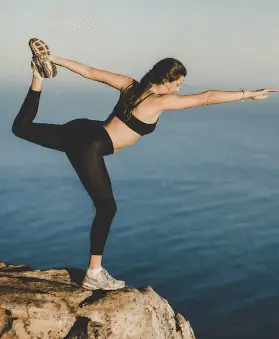A trainer or therapist may have suggested lower back workouts if you are an athlete, bodybuilder, powerlifter, or in rehabilitation. These can be used to treat back discomfort or as part of a regular training plan to prevent injuries and increase overall body capabilities.
So what’s the big deal with lower back exercises? These activities are essential for conditioning the body for both overall function and specific sports ability.
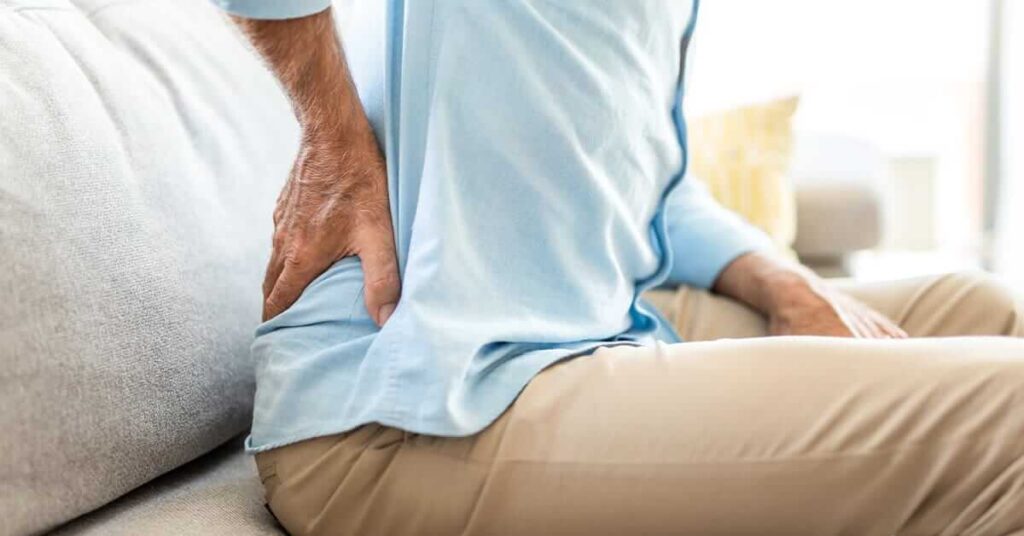
Back protection stabilisers and spinal support muscles are among the lower back muscle groups. Some of these muscular groups form the “core,” which can be toned and strengthened. The core carries and distributes pressure in various ways to support the body’s internal system.
Many lower back exercises, such as Pilates leg curls and back hyperextensions, actively target these lower back muscular groups while also aiming to improve the body’s core functions.
Strengthening of the Abdominal and Hip Flexors
Some lower back muscles help with body functions required for contact sports. Many of the lower back exercises a soccer trainer can teach players to involve counterbalancing kicking muscles and working on hip flexors to develop lower body power.
This is yet another key way in which lower back therapy can aid in the prevention of sports injuries. Though many coaches concentrate on the muscles most commonly utilised in contact sports, there is also a strong emphasis on injury prevention, which is where lower back exercises can aid.
Balancing Muscle Groups
If you’re a bodybuilder, you’re probably thinking about another vital aspect of lower back muscle strength. When lifting heavy weights, the back muscles must be strong in order to keep the chest muscles balanced.
In a broader sense, there’s the “strong limbs/weak core” problem, in which someone who works out the pecs and arms but not the back and belly may suffer from injuries or diseases since the surrounding muscle groups aren’t equipped to handle the extra weight/pressure.
When beginning a new weight-training programme, pay attention to the balance of your lower back and other core muscles in relation to important muscle groups in the chest and arms.

Lower back workouts are regularly recommended by a lot of trainers and chiropractic patients for a variety of reasons. Lower back exercise can aid in the prevention of a number of back issues. Lower back exercises can also help with the constant sitting and standing required by many modern jobs.
This boosts their appeal to a broader audience. In order to increase injury prevention and overall body responsiveness, incorporate lower back workouts into your workout programme.
What’s causing your low back pain?
Low back discomfort is the fifth most prevalent reason for a doctor’s visit in the United States.
More than 85% of these visits are for nonspecific low back pain, which is discomfort that is not caused by a disease or spinal abnormalities.
Nonspecific back pain can be brought on by:
- muscle and skeletal spasms
- The strain on the muscles
- injury to the nerves
- degenerative changes
Some of the most common causes of back pain are as follows:
- fractures caused by compression
- vertebral spondylosis
- herniated disc
- cancer
- infection
- spondylolisthesis
- neurological conditions
Exercises for Lower back Strengthening and Stretching
Lower back exercises can aid in the stabilisation of the lower spine and the support of the upper body. They may also aid in the relief and prevention of lower back pain.
After completing a back-strengthening workout, stretching the back muscles can assist prevent muscle soreness and damage. Increased range of motion and flexibility may also be advantages.
Lower back Strengthening Exercises
Glute bridge
The glute bridge engages the gluteus maximus, the greatest gluteal muscle in the buttocks. This muscle contracts as a person rises their hips, such as when rising from a squat. It also aids in external rotation and abduction (the opening of the knee and hip away from the body) (when the leg lifts away from the body).
A glute bridge is performed by doing the following:
- Step 1: Lie on your back with your knees bent and your feet flat on the floor hip-width apart. Place your arms down by your sides, palms facing up.
- Step 2: Tighten the abdominal muscles and squeeze the gluteal muscles.
- Raise the pelvis off the ground in the third step. Continue to raise the body until it is in a straight line from shoulder to hip to knee.
- Step 4: Hold your position for at least two seconds.
- Step 5: Slowly return to the starting position.
- Step 6: Repeat the previous steps 10-15 times more.
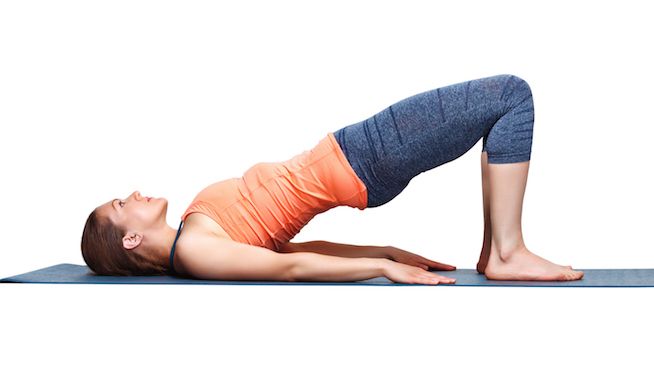
Bird-dog
The gluteal muscles are worked by the bird-dog. It also works the back extensor muscles, which connect to the back of the spine and allow you to stand, bend, and lift objects.
Take the following steps:
Begin the exercise on your hands and knees, with your shoulders directly over your hands and your hips directly over your knees.
- Step 1: Tense your core muscles and extend your right arm straight out in front of you.
- Step 2: Maintain the position while remaining balanced.
- Step 3: Lift the left leg slowly and extend it straight out behind you.
- Step 4: Maintain your position for 15 seconds.
- Step 5: Return to the starting position slowly and repeat on the other side.
- Step 6: Repetition 5 times
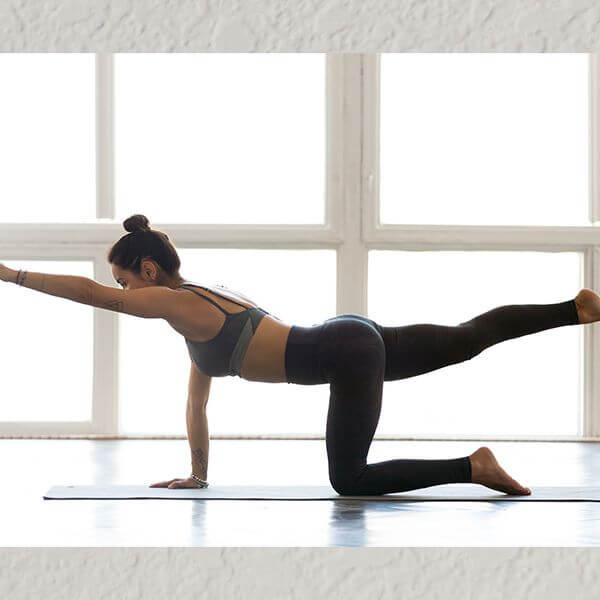
Plank
The plank exercise works the abdominals primarily, but also the arms, shoulders, hip flexors, and feet, making it an excellent full-body stability exercise. This position may also engage the back extensor muscles and the deepest back muscle, the quadratus lumborum. It runs from the bottom rib to the pelvic bone.
You can complete a plank by using the procedures outlined below:
- Step 1: Lie on your stomach with your forearms touching the floor and your elbows firmly beneath your shoulders.
- Step 2: Contract your abdominal and gluteal muscles.
- Step 3: Raise your hips and knees off the floor.
- Step 4: Hold for 10-30 seconds without allowing the pelvis to drop to the floor, then return to the starting position.
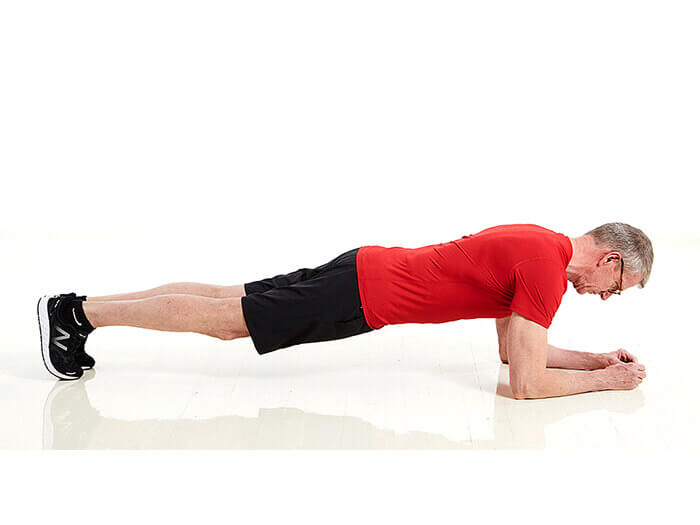
Crunches for the stomach
Crunches strengthen the core, which improves spinal support and hip alignment.
The actions that comprise abdominal crunches are as follows:
- Step 1: Lie on your back with your back to the floor, knees bent, and feet flat and hip-width apart.
- Step 2: Cross your hands over your chest or stretch down your sides to your feet.
- Step 3: Exhale and tighten the abdominal muscles to lift the head and shoulder blades off the floor.
- Step 4: Return to the beginning point.
- Step 5: Repeat the previous workout 10-15 times more.
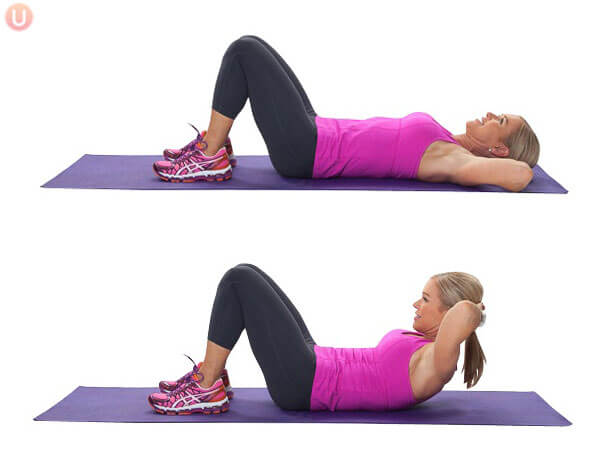
Lower back Stretching Exercise
Knee-to-chest stretches
Stretching from the knees to the chest can aid in the lengthening of the lower back muscles, relieving tension and pain.
The knee-to-chest stretch can be performed in the following manner:
- Step 1: Lie on your back, legs flat on the floor.
- Step 2: Raise your right leg and bend the knee toward your chest.
- Step 3: Using both hands, pull the right knee toward the chest.
- Step 4: Press the right knee against the chest for a few seconds.
- Step 5: Return to the beginning.
- Step 6: After repeating with the left leg, return to the starting position.
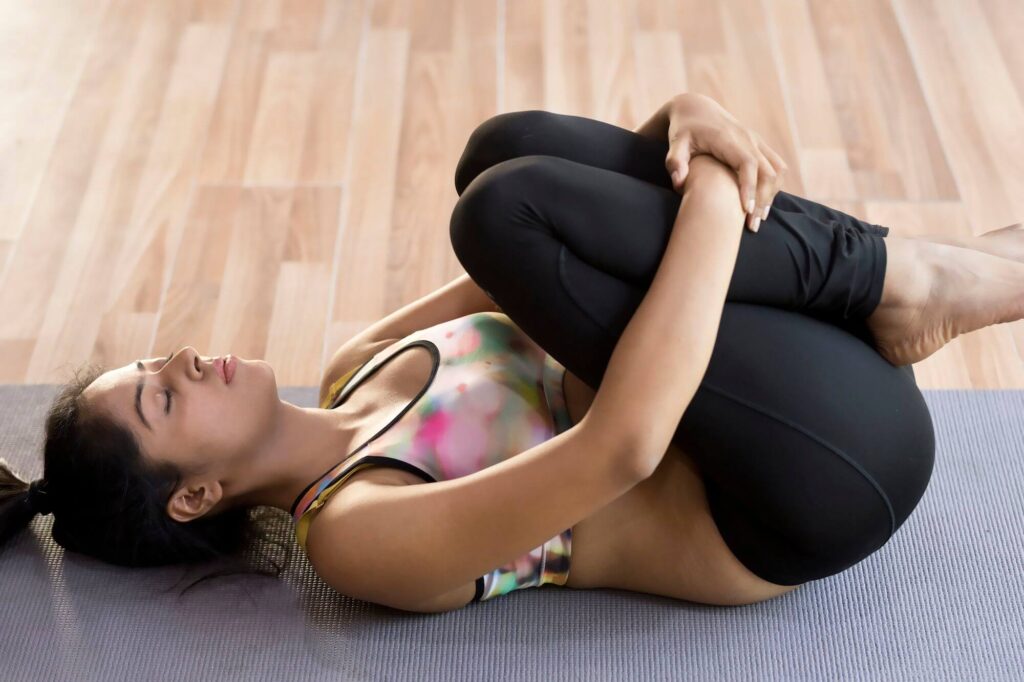
Backstretch while kneeling
The kneeling back extension can relieve discomfort and stress in the lower back muscles by stretching them.
A person can perform the kneeling back stretch by doing the following:
- Step 1: Begin the exercise on your hands and knees, with your legs hip-width apart and your shoulders directly over your hands.
- Step 2: Round your back, bringing your belly button up toward your spine and tilting your lower back toward the floor.
- Step 3: Maintain your position for 5 seconds.
- Step 4: Gently rock backwards, bringing the buttocks as near to the heels as possible. Make sure your arms are spread out in front of you.
- Step 5: Maintain your position for 5 seconds.
- Step 6: Gently return to the starting posture.

Modified seated side straddle
The seated side straddle stretches the lower back and centre hamstrings, abductors, and extensor muscles. The seated side straddle is done in the following manner:
- Step 1: Sit on the floor with your legs straight out in front of you. The feet should be spaced widely enough apart to produce a “V” shape with the legs.
- Extend your left leg, bringing your left foot up to make touch with your right knee and allowing your left knee to fall away from your body.
- Step 3: Maintaining a straight back, bend from the hips and extend the toes of your right foot forward.
- Step 4: Round the spine slowly, bringing the hands toward the right ankle or shin while lowering the head as near to the right knee as feasible.
- Step 5: Maintain the position for 30 seconds before relaxing for 30 seconds. Rep on the opposite side.
- Step 6: Complete 5-6 repeats.
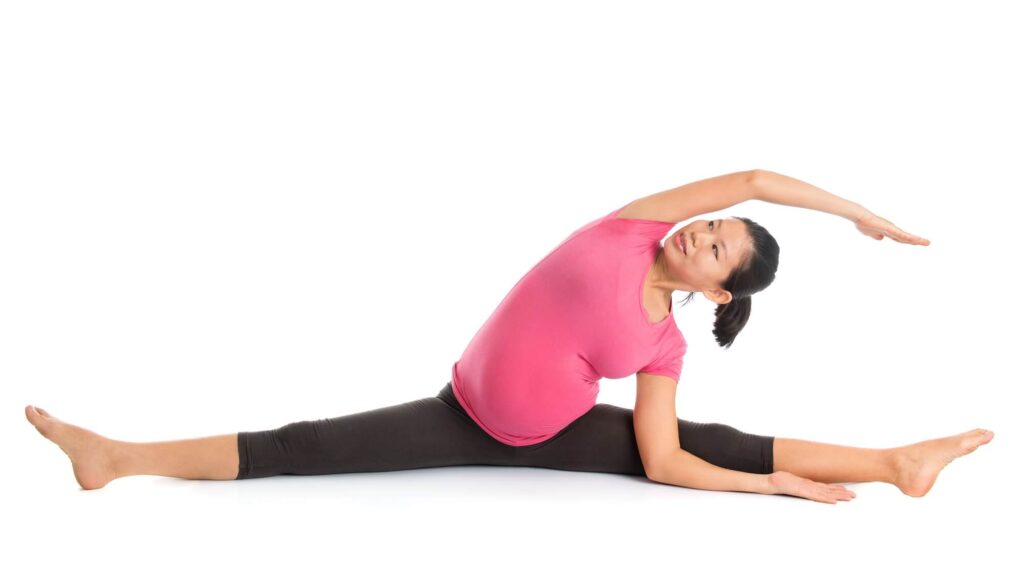
Aerobic workouts with low impact
Aerobic exercise can help with recovery and rehabilitation after a back muscle injury. Aerobic exercise increases healthy blood flow, which transports oxygen and nutrients to injured muscles and speeds up tissue recovery.
Low-impact exercise raises the heart rate without putting undue strain on the body, making it an excellent choice for exercising while alleviating back pain. Low-impact aerobic exercise examples include:
- Take a walk for exercise. A quick, brisk walk can raise the heart rate without putting too much strain on the lower back.
- Cycling in one position. A stationary bike can assist build back, hip, and leg muscle strength and flexibility without the strain of cycling on uneven terrain outside. If you require additional back support, you can utilize a standard stationary cycle, as well as reclining or recumbent bikes.
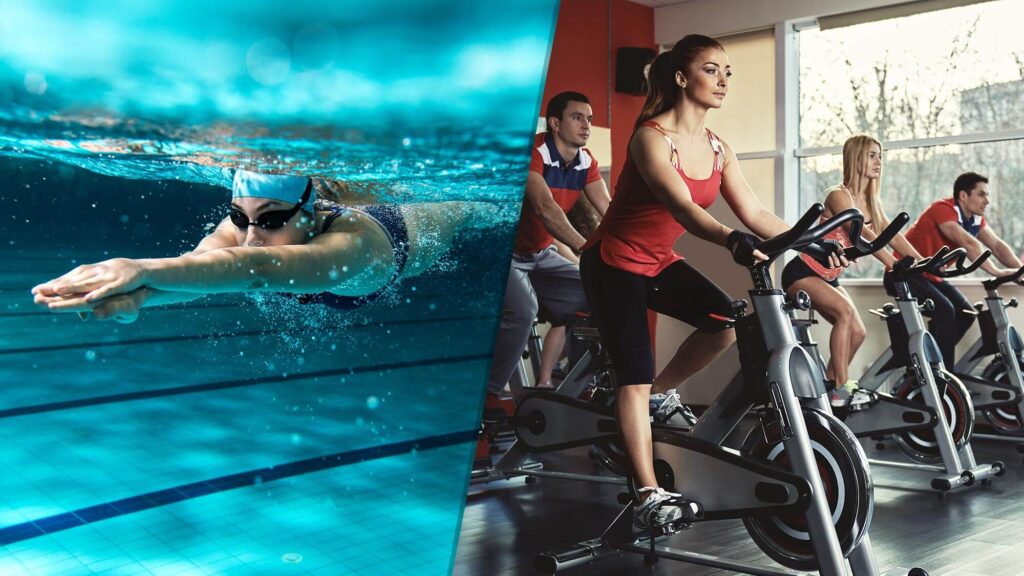
- Elliptical machines Running on an elliptical machine replicates running since the impact of the foot making contact with the ground is eliminated. Elliptical machines provide both a cardiovascular workout and muscle development in the legs, hips/buttocks, core, and lower back.
- Swimming, water aerobics, and water therapy are also alternatives. Swimming in a pool can provide a relaxing workout while reducing the danger of injury. Water provides buoyancy and resistance, allowing for more comfortable movement with less spinal pressure while simultaneously training muscles throughout the body (especially the core and back muscles). Many pools are heated, which helps relieve low back muscular discomfort.
Conclusion
Lower back strengthening and stretching activities can assist to increase strength, stability, and flexibility in the lower back. As a result, they may be able to reduce and prevent lower back discomfort.
If any of the back exercises listed above aggravates your back discomfort, stop immediately and consult a doctor.
